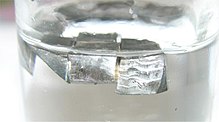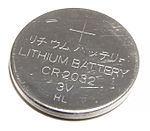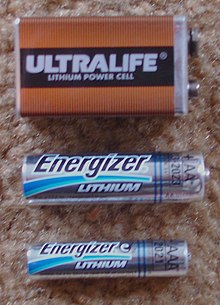User:Mervyn/sandbox
- Indented line
Medici villas[edit]
The Medici villas illustrated by Utens from a bird's-eye perspective are:
- Villa Medici del Trebbio
- Villa Medicea di Cafaggiolo
- Palazzo Pitti, the Boboli Gardens and Fort Belvedere
- Villa Medici di Castello
- Villa Medici La Petraia
- Villa Medicea di Pratolino
- Villa Medici dell'Ambrogiana
- Villa Medici di Lappeggi
- Villa Medici di Poggio a Caiano
- Villa Medici di Serravezza
- Villa Medici La Magia
- Villa Medici di Marignolle
- Villa Medici di Montevettolini
- Villa Medici di Colle Salvetti
QV[edit]
George[edit]
Oliver Baker, their university friend;
Jamie Lowther-Pinkerton, Prince William's trusted private secretary;
Julia Samuel, old friend of Diana, Princess of Wales;
William's first cousin Zara Tindall;
Hugh Grosvenor, the Duke of Westminster's son;
Emilia Jardine-Paterson, Kate's old schoolfriend; and
Participants[edit]
The eleven signatories of the Vorticist manifesto were:
- Richard Aldington
- Malcolm Arbuthnot
- Lawrence Atkinson
- Jessica Dismorr
- Henri Gaudier-Brzeska
- Cuthbert Hamilton
- Wyndham Lewis
- Ezra Pound
- William Roberts
- Helen Saunders
- Edward Wadsworth
Other figures associated with the movement were David Bomberg, Alvin Langdon Coburn, Jacob Epstein, Frederick Etchells, Christopher Nevinson, and Dorothy Shakespear. were also contributors to the development of the movement Kate Lechmere ???
Ford M. Hueffer = Ford Madox Ford ???? Jacob Kramer ???? Spencer Gore ???? TS Eliot ????
Rebecca West ?????
Whisky distilleries[edit]
The Whisky Distilleries of the United Kingdom by Alfred Barnard.
- Aberlour-Glenlivet
- Adelphi
- Albyn
- Annandale
- Ardbeg
- Ardlussa
- Argyll
- Auchintoshan
- Auchnagie
- Auchtermuchty
- Auchtertool
- Balblair
- Ballechin
- Balmenach
- Banff
- Bankier
- Ben Nevis
- Ben Wyvis
- Benmore
- Bennachie
- Benrinnes
- Bladnoch
- Blair Athol
- Bo’ness
- Bon Accord
- Bowmore
- Brechin
- Bruichladdich
- Bunnahabhain
- Burnside
- The Caledonian
- Cambus
- Cameron Bridge
- Campbeltown
- Caol Ila
- Cardow
- Carsebridge
- Clydesdale
- Clynelish
- Cragganmore
- Dail-Uaine
- Dalaruan
- Dalintober
- Dalmore
- Dean
- Devanha
- Dundashill
- Edinburgh
- Edradour
- Fettercairn
- Gerston
- Glen Albyn
- Glen Grant
- The Glen Kinchie
- Glen Lossie
- Glen Nevis
- Glen Rothes
- Glen Spey
- Glenadon
- Glenburgie
- Glencadam
- Glendarroch
- Glendronach
- Glenfarclas
- Glenfoyle
- Glengarioch
- Glenglassaugh
- Glenguin
- Glengyle
- Gleniffer
- Glenlivet
- Glenmavis
- Glenmorangie
- Glenochil
- Glenside
- Glentarras
- Glenturret
- Glenugie
- Grandtully
- The Grange
- Greenock
- Hazelburn
- Highland Park
- Inchgower
- Isla
- Jura
- Kinloch
- Kintyre
- Kirkliston
- Lagavulin
- Langholm
- Laphroaig
- Linkwood
- Littlemill
- Loch Katrine
- Lochead
- Lochindaal
- Lochruan
- Longrow
- Macallan
- Millburn
- Milton
- Milton Duff
- Mortlach
- Nevis
- Oban
- Ord
- Port Dundas
- Port Ellen
- Provanmill
- Pulteney
- Rieclachan
- Rosebank
- Royal Brackla
- Royal Glenury
- Royal Lochnagar
- Saucel
- Scapa
- Scotia
- Springbank
- Springside
- St. Magdalene
- Strathdee
- Stromness
- Talisker
- Tambowie
- Teaninich
- Tobermory
- Yoker
Lithium inv[edit]




As widespread economic turmoil in the first decade of the 21st century resulted in the broad destabilization of many traditional investment products and venues alternative investment options began to realize an increase in popularity among investors who may not have otherwise strayed from established investment practices under previous markets. Speculation in metallic or base Lithium is an example of such a trend. Speculators hope to make a viable play on a perceived growth in demand for lithium metal due to the widespread adoption of lithium batteries in emerging technologies. Lithium batteries have become a preferred power source for energy-hungry devices such as cell phones because they are more efficient and scalable than previous-generation nickel-metal hydride batteries thus they are in high demand in support of automobile and electronics manufacturing. Factors that could result in limitations affecting overall lithium supply are seen by some as prescient; with predicted supply chain volatility potentially overpowering other market factors and becoming the primary price driver, essentially resulting in a seller's market and thereby making the metal a profitable investment. However this model tends to disregard the influence of other factors outside basic supply/demand curves such as market regulation and the increased tendency for costlier components to be targeted for replacement by new technologies. Current projections of the global market for lithium-ion batteries range from $26 billion in 2023 (Navigant Research) to a very optimistic $33 billion in 2019 (Transparency Market Research).[1]
Metal[edit]
Lithium metal is an extremely soft, highly reactive, and flammable element. It is most frequently found in deposits such as spodumene and pegmatite minerals, with larger resources in the U.S., Canada, Australia, China, Zimbabwe, and Russia. Lithium possesses a unique chemical profile making it the lightest metal in the periodic table and the least dense solid element. Its atomic number is 3 (right behind helium at 2 and hydrogen at 1), and its density is just 0.53 kg/L. This alkali metal is probably best-known for its wide use in lithium batteries common in all sorts of electronics devices. Other industrial applications include manufacturing heat-resistant glass and ceramics, high-performance alloys used in aircraft, and lubricating greases.[2] Lithium deuteride is used in staged thermonuclear weapons as a fusion fuel. Compounds of lithium are also used as mood stabilizing drugs in psychiatry. The breakdown of the global end-use lithium markets is estimated as follows: ceramics and glass, 31%; batteries, 23%; lubricating greases, 9%; air treatment, 6%; primary aluminum production, 6%; continuous casting, 4%; rubber and thermoplastics, 4%; pharmaceuticals, 2%; and other uses, 15%.[3]
Global resources and production[edit]
The global production of lithium is to triple this decade, from 200,000 tons in the year 2000 to over 600,000 tons in 2020. Mining lithium metal is not expensive, especially at high mountain plateaus, where lithium is collected from brine ponds evaporated by the sun. Brine excavation is probably the only lithium extraction technology widely used today, as actual mining of lithium ores is much more expensive and has been priced out of the market.[4][5]
Identified lithium resources total 5.5 million tons in the United States and approximately 34 million tons in other countries, so lithium is not, in fact, a rare commodity. Identified lithium resources for Bolivia and Chile are 9 million tons and in excess of 7.5 million tons, respectively. Identified lithium resources for Argentina, China, and Australia are 6.5 million tons, 5.4 million tons, and 1.7 million tons, respectively. Canada, Congo (Kinshasa), Russia, and Serbia have resources of approximately 1 million tons each. Identified lithium resources for Brazil total 180,000 tons.[6]
The world’s top 3 lithium-producing countries from 2016, as reported by the US Geological Survey.[7]
Australia[edit]
In 2016, Australian companies delivered 14,300 tons of metal, an increase of 1,300 tons from 2014. The country develops the Greenbushes lithium project, which is owned and operated by Talison Lithium. Greenbushes is the world’s largest known single lithium reserve and has been operational for over 25 years. The location also provides easy access for Asian electronics companies, which are the global top lithium consumers.
Chile[edit]
In 2016, Chilean mines delivered 12,000 tons of lithium, providing the second-highest amount of lithium. Overall, Chile possesses the largest confirmed lithium reserves in the world, with over 7.5 million tons of the element. By that estimate, the country hosts roughly five times more lithium than Australia, which features the second-largest reserves. In particular, the Atacama salt flat is the most significant source of country’s massive lithium production, and it has been reported that one project alone encompasses approximately 20% of the world’s total lithium. While Australia extracts lithium from traditional hard-rock mines, Chile’s lithium is found in brines below the surface of salt flats. These brines are collected and treated in order to separate the element from wastewater.
Argentina[edit]
In 2016, for the first time, Argentina overtook China to become the third largest producer of lithium. Argentina has lithium reserves of 9,000,000 tons and the Salar del Hombre Muerto district is a part of the so-called lithium triangle which is believed to be home to half of the World's lithium reserves. Due to increased demand worldwide, lithium mining in the country shows no signs of slowing down with output set to triple by 2019.
The Lithium Triangle[edit]
The intersection of Chile, Bolivia, and Argentina make up the region known as the Lithium Triangle. The Lithium Triangle is known for its high quality salt flats including Bolivia's Salar de Uyuni, Chile's Salar de Atacama, and Argentina's Salar de Arizaro. The Lithium Triangle is believed to contain over 75% of existing known lithium reserves.[8]
Investment vehicles[edit]
Currently, there are a number of options available in the marketplace to invest in the metal. While buying physical stock of lithium is hardly possible, investors can buy shares of companies engaged in lithium mining and producing.[9] Also, investors can purchase a dedicated lithium ETF offering exposure to a group of commodity producers.
Lithium Index[edit]
The performance of the global lithium industry is covered by Solactive Global Lithium Index. The index is composed of companies that are primarily engaged in some aspect of the lithium industry such as lithium mining, exploration, and lithium-ion battery production.
Mining companies[edit]
There are many companies relying on lithium for a substantial portion of their revenues. Examples include:
- Advantage Lithium (TSX-V: AAL), a Canadian based lithium explorer with a large-scale development asset located in the Cauchari basin in Argentina;
- Sociedad Quimica y Minera (NYSE: SQM), a Chilean producer of specialty plant nutrients and chemicals that runs large-scale lithium production operations. The main production facilities are located in the Atacama Desert;
- FMC Corporation (NYSE: FMC), a Philadelphia-based diversified chemical company also focusing on this commodity;
- Albemarle Corporation (NYSE: ALB), yet another industrical company producing lithium chemicals;
- Bearing Resources (TSXV:BRZ), a Canadian miner developing a lithium brine project in Chile and the highest-grade undeveloped project
- Bacanora Minerals (TSX: BCN), a Canadian miner developing a lithium mine in Mexico, Sonora, first to enter in a conditional supply agreement with Tesla (NYSE: TSLA)
- Lithium Americas Corp (OTCQB: LACDF), a Canadian/Argentinian miner, producer and supplier of lithium, with large-scale assets located Argentina and Nevada, USA.
- RB Energy (TSX:RBI), a Canadian company developing The Quebec Lithium Project, filed for creditor protection in 2014, according to the Financial Post [10]
- MGX Minerals (CSE: XMG/ FKT: 1MG/ OTC: MGXMF), a diversified Canadian mining company engaged in petrolithium projects in western Canada and the United States.[11]
- Kodal Minerals (LSE: KOD), a small-cap mining and exploration company that currently focuses on its large lithium project in Mali.
- Savannah Resources (LSE:SAV), a lithium miner based in Portugal and listed in London. The company focuses on hard rock lithium extraction as opposed to the brine extraction found in South America.
Exchange traded funds[edit]
- Global X Lithium ETF (NYSE: LIT), an ETF trading since 2010 and holding the above listed lithium producers as its top holdings. LIT is a passive ETF seeking to replicate Solactive Global Lithium Index.
See also[edit]
- Sprott Molybdenum Participation Corporation
- Uranium Participation Corporation
- Traditional investments
- Alternative investments
- Minor metals
Rare materials as investments[edit]
- Diamonds as an investment
- Palladium as an investment
- Platinum as an investment
- Silver as an investment
- Gold as an investment
chateaus[edit]
Châteaux featured[edit]
| Château | Location | Series | Owner(s) |
|---|---|---|---|
| Abbaye de la Bussière | La Bussière-Sur-Ouche, Burgundy | 2 | Clive and Tanith Cummings |
| Château Caillac | Fongrave, Lot-et-Garonne, Nouvelle-Aquitaine | 2, 3 | Steve and Angela Hall |
| Château de Bois Giraud | St Philbert en Mauges, Pays de la Loire | 1 | Tanya, Marian and Katharine |
| Château de Bourneau | Bourneau, Vendée | 2 | Erin Choa and Jean-Baptiste Gois |
| Château de Brametourte | Lautrec, Tarn, Occitanie | 1, 2 | Paul and Alison |
| Château de Brives | Brives-sur-Charente | 4 | George and Sarah Haslett |
| Château de Dohem | Dohem, Nord-Pas-de-Calais | 2 | Marcus and Wendy |
| Château de Jalesnes | Vernantes, Maine-et-Loire, Pays de la Loire | 1 | Michael & Jonathan (n.b. now different owners) |
| Château de la Basmaignée | Montenay in Mayenne, Pays de la Loire | 1 | Billy and Gwendoline Petherick |
| Château de la Ruche | Pays de la Loire | 2, 3 | Tim and Rebecca Jones |
| Château de la Vigne | Concourson-sur-Layon, Pays de la Loire | 2 | May Simpkin |
| Château de Lalande[12] | Crozon-sur-Vauvre, Indre, Centre-Val de Loire | 1, 2, 3, 4 | Stephanie Jarvis |
| Château de Lomenie | Montpouillan, Lot-et-Garonne, Nouvelle-Aquitaine | 1, 2, 5 | Ashley Adams and Johnny Peck |
| Château de Lucheux | Lucheux, Picardie, Somme | 2 | Nicole and Stephan |
| Château de Montvason | Sauxemesnil, Manche | 2,3 | Paul Golledge and Emma Newton-Gunn |
| Château de Rosières en Vivarais | Saint-Félicien, Ardèche | 3, 4 | Amy and Marc de Dinechin |
| Château de Saugé | Saivres, Poitou-Charentes | 3 | Paul and Donna Newman |
| Château de St-Ferriol | Languedoc-Roussillon | 1 | James and Sophie McDonald |
| Château de Thuriés | near Revel, Midi-Pyrénées | 2, 3 | Jayne and Steve Simmons |
| Château des Lys | Sailly-Flibeaucourt, Picardie | 1,2, 4, 5 | Tim and Margreeth Alexander |
| Château d'Humeroeuille | Humeroeuille | 3 | Alex and Ithaca Morel de Boncourt |
| Château d'Humières | Humières, Nord-Pas-de-Calais | 1, 2 | Nicole Albert and Stephan Botte |
| Château du Bailleul | Pays de la Loire | 1 | Philip and Angelina Baillie-Smith |
| Château du Doux | Altillac, Limousin | 2 | Clive, Karen and Abbie Young |
| Château du Masgelier | Le Grand-Bourg, Limousin | 1, 2, 4 | Fiona Jones |
| Château Gonneville sur Honfleur "Le Fleur" | Gonneville-sur-Honfleur, Normandy | 5 | Anna and Philipp Mayrhofer |
| Château la Grande Maison | Poitou-Charentes | 2, 3 | Ben Mitchell and Billie Godfrey |
| Château Lagorce[13] | Haux, Aquitaine | 2, 3, 5 | Edward and Anna Holmes |
| Château la Perriere | Chinon, Central | 2 | Paul and Karen Horne |
| Château Madame de Miremont | Mauzens-et-Miremont | 3 | |
| Château Mareuil | Poitou-Charentes | 2, 3, 4 | Belinda and Lee Prince |
| Château Mas de Pradié | Aveyron, Occitanie | 4, 5 | Julia Fulford-Kirby |
| Château Monteil | Calviac en Perigord, Dordogne | 1, 2, 5, | Tim, Krys and Owen Birch |
| Domaine de la Salle | Poitou-Charentes | 2 | Mariam Al-Accad and Johnno |
| Le Vieux Château | Le Renouard, Basse-Normandie | 1 | (n.b. now sold) |
- ^ Howard, Wilmont (May 7, 2014). "The Lithium Industry: Will Supply Meet Demand?". seekingalpha.com. Retrieved 2015-04-24.
- ^ "How to Invest in Lithium". commodityhq.com. Retrieved 2015-04-24.
- ^ "How to Invest in Lithium". elementinvesting.com. Retrieved 2015-04-28.
- ^ Cafariello, Joseph (March 10, 2014). "Lithium: A Long-Term Investment Buy Lithium!". wealthdaily.com. Retrieved 2015-04-24.
- ^ Kaskey, Jack (July 16, 2014). "Largest Lithium Deal Triggered by Smartphones and Teslas". bloomberg.com. Retrieved 2015-04-24.
- ^ "Lithium Statistics and Information". U.S. Geological Survey. 2011.
- ^ "8 Top Lithium-producing Countries". Commodity.com. December 14, 2017. Retrieved 2017-12-14.
- ^ "The Lithium Triangle"http://latintrade.com/the-lithium-triangle/. Latin Trade. Retrieved 2017-8-13.
- ^ "How to Invest in Lithium". commodityhq.com. Retrieved 2015-04-24.
- ^ "RB Energy meltdown highlights tough times for lithium, rare earth firms". Financial Post. Retrieved 2017-04-01.
- ^ https://www.reuters.com/article/mgx-minerals-lithium-idUSL5N1FH5U7
- ^ Château de Lalande
- ^ Château Lagorce

